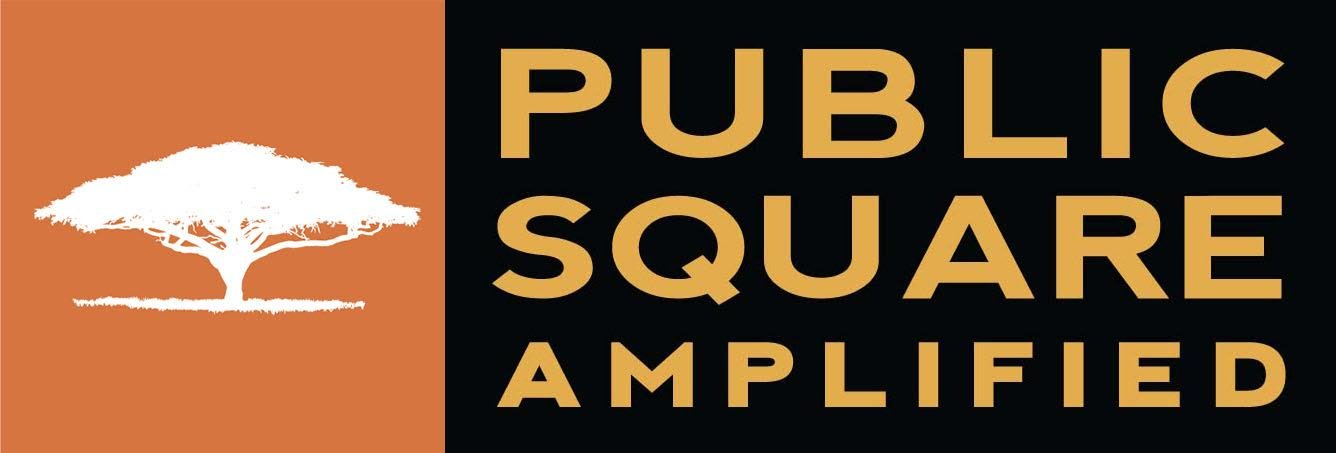Counterintelligence and U.S. Democracy: An inconvenient truth
Protestors outside the Essex County Dr. Martin Luther King, Jr. Justice Building in Newark, NJ. (Josie Gonsalves for Public Square Amplified)
This story was produced as part of the Democracy Day journalism collaborative, a nationwide effort to shine a light on the threats and opportunities facing American democracy. Read more at usdemocracyday.org.
In 2001 Tom Brokaw’s book on WWII, “The Greatest Generation,” soared to the top of the NY Times Best-Sellers list. Brokaw leaned into the propaganda of the United States—protecting freedom and democracy—by offering this “it is, I believe, the greatest generation any society has ever produced.” While wrapping his comments in hyperbole, he disavowed any concern with historical context.
D-Day, June 6, 1944, emotes feelings of patriotism and pride in democracy, but an operation the following year is a sober reminder of the inherent contradictions to such platitudes.
September 3, 1946, marks the beginning of “Operation Paperclip,” a program organized by U.S. military and intelligence agencies which, according to Stephen Kinzer, provided “up to 1,000 visas for German and Austrian scientists.” In the interest of “national security,” these scientists would work with U.S. counterintelligence to perfect the use of psychoanalytic drugs, hallucinogens and torture techniques to elicit information from prisoners and other targets.
Unfortunately, retelling this aspect of our history has been reserved for conspiratorial meanderings and not rigorous and thoughtful commentary.
Despite the sordid history of Operation Paperclip, many among us will minimize its significance, preferring to view the operation as a justifiable aberration. Such reasoning ignores the long history of counterintelligence and its function in U.S. politics.
As a point of fact, one cannot fully understand the trajectory of democracy in the United States without accounting for the use of counterintelligence, at home and abroad, as an essential element of American democracy.
Eric Foner, arguably the most authoritative scholar on Reconstruction, labeled it as the Nation’s “second founding.” Foner refers to the Civil War amendments, the first Civil Rights Acts, African Americans winning elected offices, and the like. Perhaps this brief period of Reconstruction fundamentally redefined and transformed democracy in America. However, the end of the Civil War did not only give birth to Reconstruction; it also introduced U.S. counterintelligence agencies that would, in short order, become an integral arm of the government.
Between 1865 and 1885, the formation of the Secret Service, Office of Naval Intelligence and the Military Intelligence Division of the U.S. Army materialized. These institutions collaborated with the Bureau of Intelligence (later the FBI), U.S. Post Office, Office of Strategic Services, CIA and local police in the 20th century to undermine struggles for full inclusion and participation in American democracy. It is an astonishing history that mocks any notions of the United States as the standard bearers of democracy.
A reason why counterintelligence is largely under-discussed is that J. Edgar Hoover is viewed as an outlier. Any discussion of intelligence agencies’ skirting of democratic rights begins with Hoover. However, Kurt Blome, Allen Dulles, John Foster Dulles, Richard Helms, Frank Wisner, and Sidney Gottlieb, in addition to the House of Unamerican Activities Committee and the duplicitous actions of U.S. presidents, are all critical actors in this story. They demonstrate that COINTELPRO was not simply an operation by a rogue FBI director but central to the function of democracy in America.
In the same manner that Hoover is held up as an anomaly and offered as a sacrificial acknowledgment of a bad citizen, Martin Luther King Jr. is often discussed as the most egregious example of FBI power run amok.
American citizens far and wide will say, “The FBI spied on Dr. King.” This recognition, while helpful, can also be misleading if we leave it there. Spying minimizes the overall scope of counterintelligence activities, and focusing on King misses the breadth and depth of the program.
Destabilization, disrupting and neutralizing organizations and their leaders, undermining countries with democratically elected heads of state, harassing rank and file membership, and an assortment of other actions comprised much of the 20th century.
As we reflect on democracy in America, we should consider the local grassroots organizers of the Universal Negro Improvement Association, National Association for the Advancement of Colored People, subscribers to Black newspapers, Black intellectuals, and the Black Church were all victims of counterintelligence. COINTELPRO also targeted the Civil Rights and Black Power Movement with devastating efficiency.
Thousands of Black activists were branded as threats to the existing order simply because their vision of democracy was broader than the United States intended. The use of Operation Paperclip, M.K. Ultra, and various other treacherous experiments against American citizens presents a dark cloud over American history. A cloud that will persist if we continue celebrating “the greatest generation” while ignoring the dishonorable parts of history.
Guest Editor, Ande Richards.


